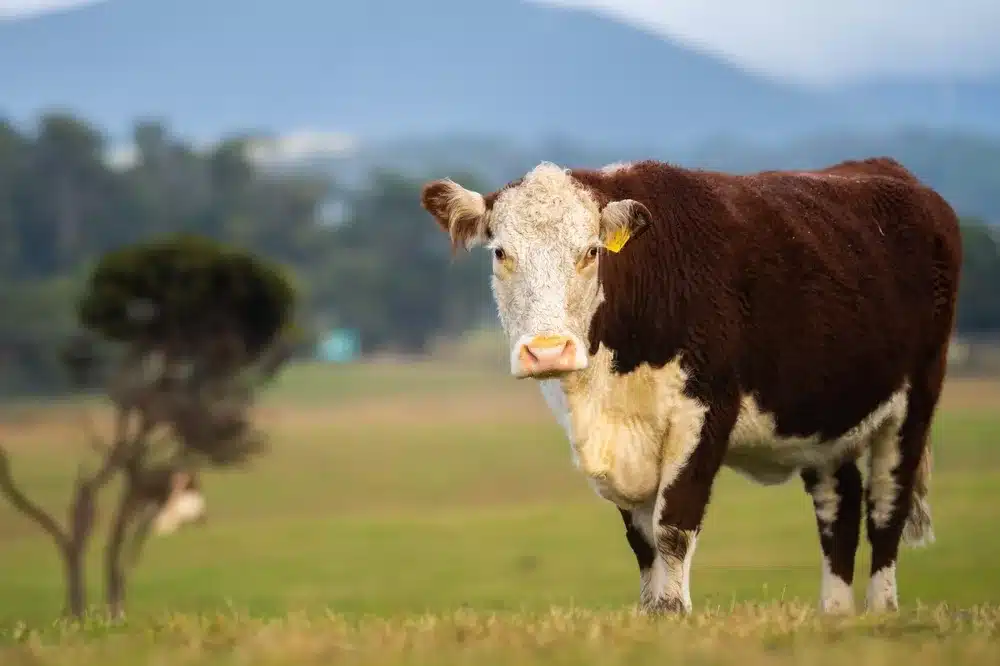Flexible study beef cattle course
This beef cattle course is offered as a flexible online study and will get you started on the fundamentals of beef cattle management including husbandry, breeding, production, feed lots, herds and more. It aims to help students analyse and make informed decisions about the management requirements of beef cattle. You should be able to describe and explain the principles and practices of beef cattle husbandry and management. This course is suitable for beef cattle farmers, agricultural workers looking after beef cattle and anyone with an interest in keeping beef cattle.
Benefits:
- 100 hours
- Online and self-paced
- 12 months to complete
- Printed Notes Available
- Get expert tutor support from practicing Australian Vets.
What will you learn in this beef cattle course?
- Describe the nature and scope of Beef Cattle Production.
- Compare different beef production systems
- Discuss beef cattle breeding and its significance to production.
- Develop a sound, but general introduction to animal health.
- Describe significant parasites that infect cattle and determine appropriate management of these and related problems.
- Recommend appropriate provision of feed for commercial beef production.
- Develop a management strategy for a commercial beef herd.
- Explain feed lot management for beef production.
- Explain Stud herd management for beef production.
- Determine significant management requirements for a beef production enterprise, in order to attain and sustain a viable economic performance
Detailed Course Outline
This course is made up a number of lessons or units. Each having self assessment questions, set tasks (practical homework), and an assignment which you can upload online. Click below to read about each of the lessons and what you will learn.
There are 10 Lessons in this course (+ free bonus lesson!):
Introduction to beef cattle and beef cattle breeds
- The role of beef cattle in agriculture
- Scientific classification
- Examples of breeds worldwide
- British Beef breeds – Angus, Hereford, South Devon, Sussex, Red Poll
- U.S. Developed Beef breeds – Santa Gertrudis, American Brahman, Amerifax, Beefmaster
- European Beef breeds – Salers, Charolais, Simmental, Gelbvieh
- Australian Beef breeds – Braford, Beefmaster, Droughtmaster, Murray Grey, Australian Lowline
- South African Beef Breeds – Salorn, Tswana, Tuli, Africkander,
- Breed selection considerations – horned vs poll, colour, gestation length, birth weight, mothering ability, post weaning growth, meat quality etc
Beef Cattle Production Systems
- Various systems of production – extensive, intensive, semi-intensive
- Choosing a suitable system – considerations include size, climate, soils, transport, markets etc
- Cattle handling facilities
- Materials used in cattle handling
- Cattle identification – branding, ear marking, tattooing, ear tags
- De-horning – chemical and mechanical methods
- Castration, dips and dipping, and injecting cattle
Beef Cattle Breeding
- Heritability, performance testing, progeny testing, selection
- Pure versus cross breeding – advantages and disadvantages
- Calving percentage
- Management factors to improve calving percentage
- Weaning calves
- Factors affecting calf weaning
- The anatomy of the male reproductive system
- The physiology of the male reproductive system
- Fertility problems in the male
- The anatomy and physiology of the female reproductive system
- Fertility problems
- Pregnancy and partition
- The structure of the mammary glands
- Secretion of milk
- Growth and development
- Post natal growth
- Compensatory growth
Diseases in Beef Cattle – Viral and Bacterial
- Determining health status of the animal
- Signs of a healthy animal
- Causes of ill-health
- Injury, poor nutrition, poisoning, parasites, hereditary conditions etc
- Preventing ill-health
- Correct feed and nutrition, insect control, parasite control, vaccinations, control stress etc
Parasitic and Other Diseases in Beef Cattle
- Some parasitic diseases
- Other ailments of cattle – actinobacillosis, anaplasmosis, arthritis, beef measles
- poisoning, pink eye, milk fever, bloat etc
Nutrition in Beef Cattle
- Feed type – roughages and concentrates
- Carbohydrates, protein, fats
- Grass or grain feeding
- Rations for beef cattle – maintenance or production rations
- Maintenance rations
- Procedure for calculating a ration
- Supplementary feeding of protein
- Lot Feeding
- Minerals
- Common macromineral deficiencies
- Common trace mineral deficiencies
- Diagnosis of trace mineral deficiencies
- Vitamins
- Water for farm animals
- Protein
Commercial Herd Management
- The breeding herd
- Production systems
- Cow-calf herd
- Beef production systems using dairy stock
Feed Lot Management
- Lot feeding – types of feedlot
- Managing cattle in a feedlot
- Feedlot Records
- Article on pen feeding in South Africa
Stud Herd Management
- Time of calving
- Feeding
- Fertility
- Indicators of fertility in bulls
- Indicators of fertility in cows
Management, Economics and Marketing
- Profitability
- Factors affecting gross output
- Factors affecting variable costs
Free Bonus Lesson – Artificial Insemination in Cattle
- Semen Collection and Storage in Cattle
- Heat Detection
- Timing of Insemination for Maximum Conception
- Equipment and Supplies needed for AI in Cattle
- Inseminating a Group of Synchronized Cattle
- and more.
When you have completed the lessons of your Certificate course, you will be given the option of taking the optional exam. It’s okay if you don’t want the exam, we still issue your Careerline Certificate.

